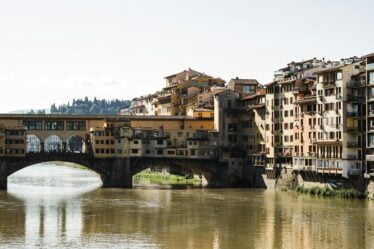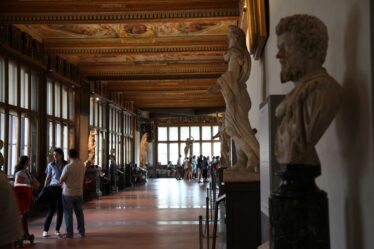
Arrival in Florence
In 1492, Girolamo Savonarola, a Dominican friar known for his fiery sermons and radical views, was invited to Florence by Lorenzo de’ Medici, also known as Lorenzo the Magnificent. Savonarola’s arrival marked the beginning of a tumultuous period in Florence’s history. Despite Lorenzo’s initial support, Savonarola’s unyielding nature led him to deny Lorenzo’s last rites, condemning him as unfaithful.
The Bonfire of the Vanities
In August 1494, Savonarola initiated the infamous Bonfire of the Vanities. He fervently preached against the moral corruption and excesses of the time, urging Florentines to renounce their secular possessions. He organized a massive bonfire in the Piazza della Signoria, where citizens were encouraged to bring non-religious paintings, books, cosmetics, and other items considered to promote vanity and sin. Notably, the renowned artist Sandro Botticelli is said to have sacrificed several of his own paintings to the flames.
Campaign Against Secular Books and Goods
Following the destruction of art and luxury items, Savonarola’s campaign intensified. In September 1494, he called for the burning of “bourgeois books,” works that he deemed morally harmful and contrary to Christian values. The relentless purging of secular culture did not stop there; Savonarola went on to ban various street goods, including tripe and melons, which were deeply valued by the Florentine people for their supposed therapeutic properties.
Downfall and Execution
Savonarola’s extreme measures and authoritarian stance eventually led to his downfall. The very people who once followed him turned against him, resenting his rigid control over their daily lives and cultural practices. In May 1498, after being excommunicated by the Pope and condemned for heresy, Savonarola was executed by hanging and his body was burned at the stake in the same Piazza della Signoria where he had conducted his bonfires.
Legacy
Girolamo Savonarola remains a controversial figure in the history of Florence. His zeal for religious reform and his role in the Bonfire of the Vanities left a lasting impact on the city’s cultural and religious landscape. Despite his fall from grace, Savonarola’s fervent calls for moral purity and social reform resonate as a significant chapter in the rich tapestry of Florence’s history.



